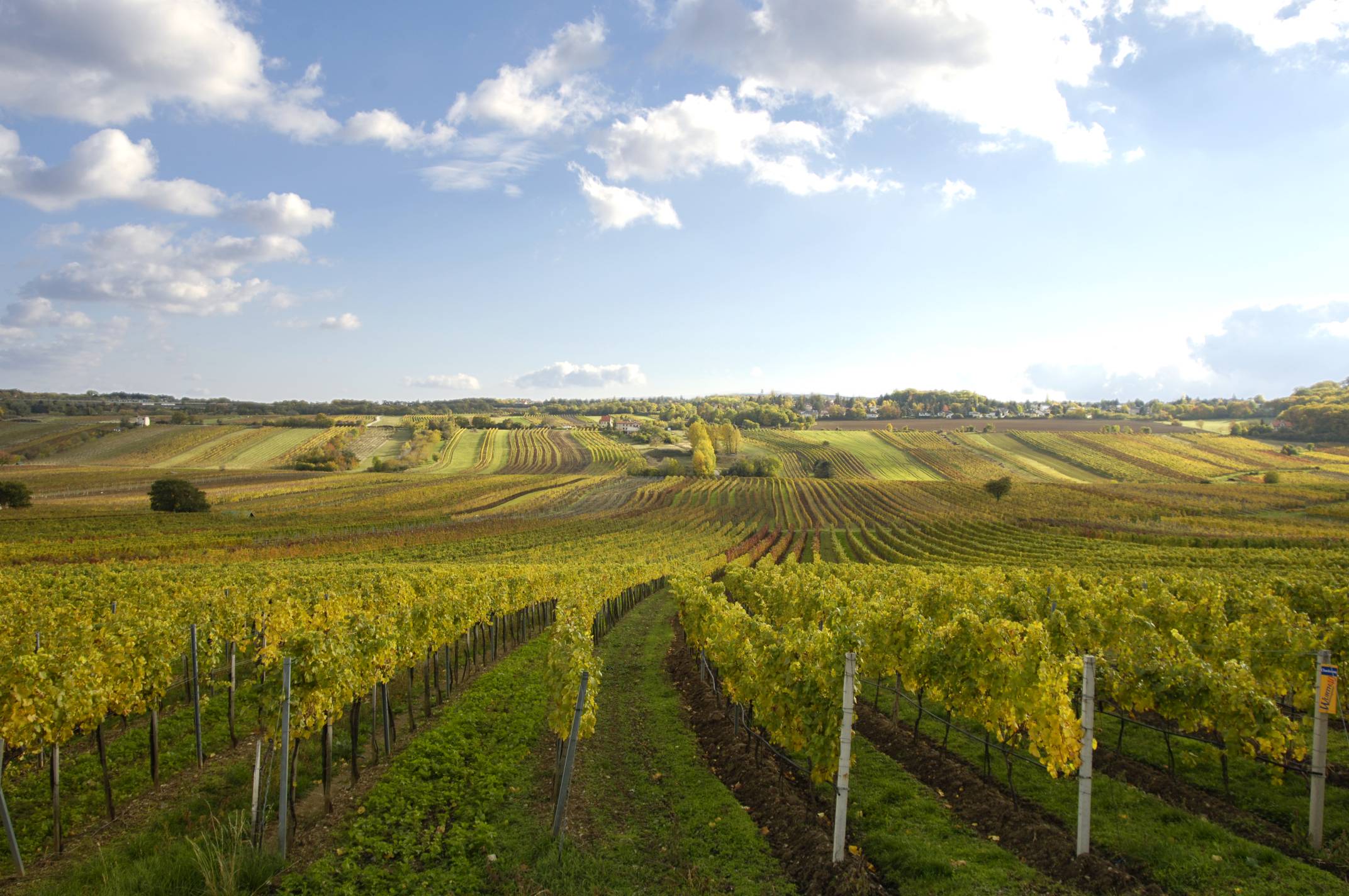The Thermenregion wineries are distributed between 42 different wine communities. The most significant viticultural centres are Bad Vöslau, Baden, Gumpoldskirchen, Mödling, Pfaffstätten, Sooß, Traiskirchen and Tattendorf.
The most popular Vineyards
Bad Vöslau:
Starting point for Robert Schlumberger’s career and home of the Goldeck vineyard, source of Austria’s first wine with a registered trademark, Vöslauer Goldeck, in 1859. Important registered vineyard: Ober Kirchen.
Baden:
One of the tourist attractions of the historic imperial city is the Römertherme, but numerous other sulphur springs bubble out of the ground. Important registered vineyards: Auf der Weide, Bärenschwanzel, Flaming, Landstiebeln und Römerberg.
Gumpoldskirchen:
One of the tourist attractions of the historic imperial city is the Römertherme, but numerous other sulphur springs bubble out of the ground. Important registered vineyards: Auf der Weide, Bärenschwanzel, Flaming, Landstiebeln und Römerberg.
Mödling:
Wine scientists associate the city with the neighbouring Kalenderberg Mountain where grape seeds from the Hallstatt period were found at the beginning of the 20th century. Important registered vineyards: Griess, In den Jenninen.
Perchtoldsdorf:
Ried Goldbiegl, Ried Haspel. Ried Hochrain, Ried Höllriegel, Ried Sommerhagenau
Pfaffstätten:
The Lilienfelderhof, a monasterial wine estate surrounded by walls that first mentioned in written documents in 1209, is located here. Important registered vineyards: Glaslautern, Höfen, Ronald, Rosenberg, Tagelsteiner, Thörlberg.
Sooss:
This important historic wine village was under the rule of the Klein-Mariazell Abbey from the beginning of the 14th century until late in the 18th century. Important registered vineyards: Gradenthal, In Schön, In Schullern, Waasnen.
Tattendorf:
The world’s largest contiguous St. Laurent vineyard is located in Tattendorf. Important registered vineyards: Frauenfeld, Holzspur, Lores, Weisses Kreuz und Stiftsbreite.
Traiskirchen:
The Babenbergs owned this village for a very long time. It was later transferred to the Habsburgs and then became the property of the Melk Monastery. Important registered vineyards: Mandel-Höh und Rodauner.
More Infos at Regional Atlas
